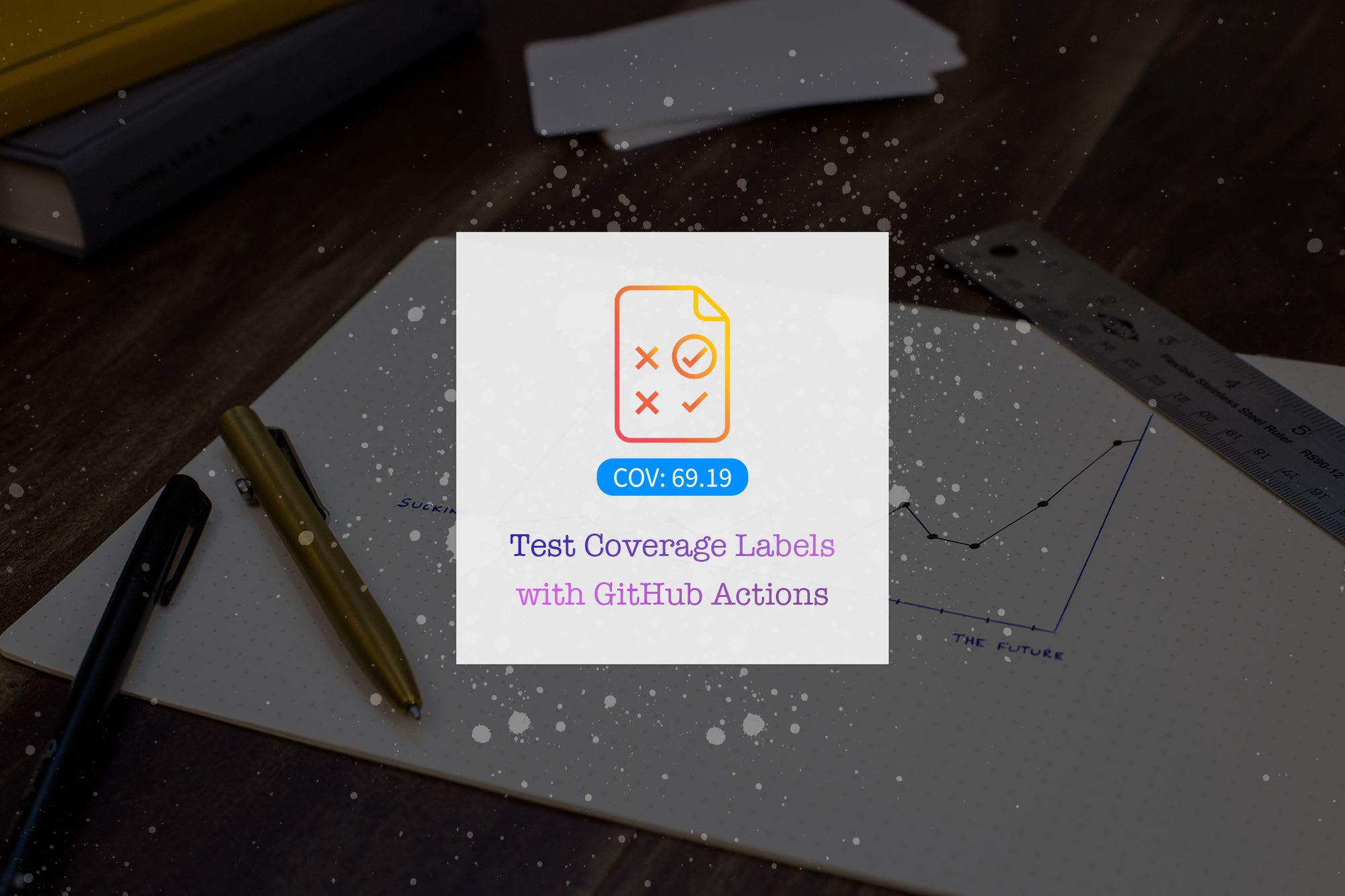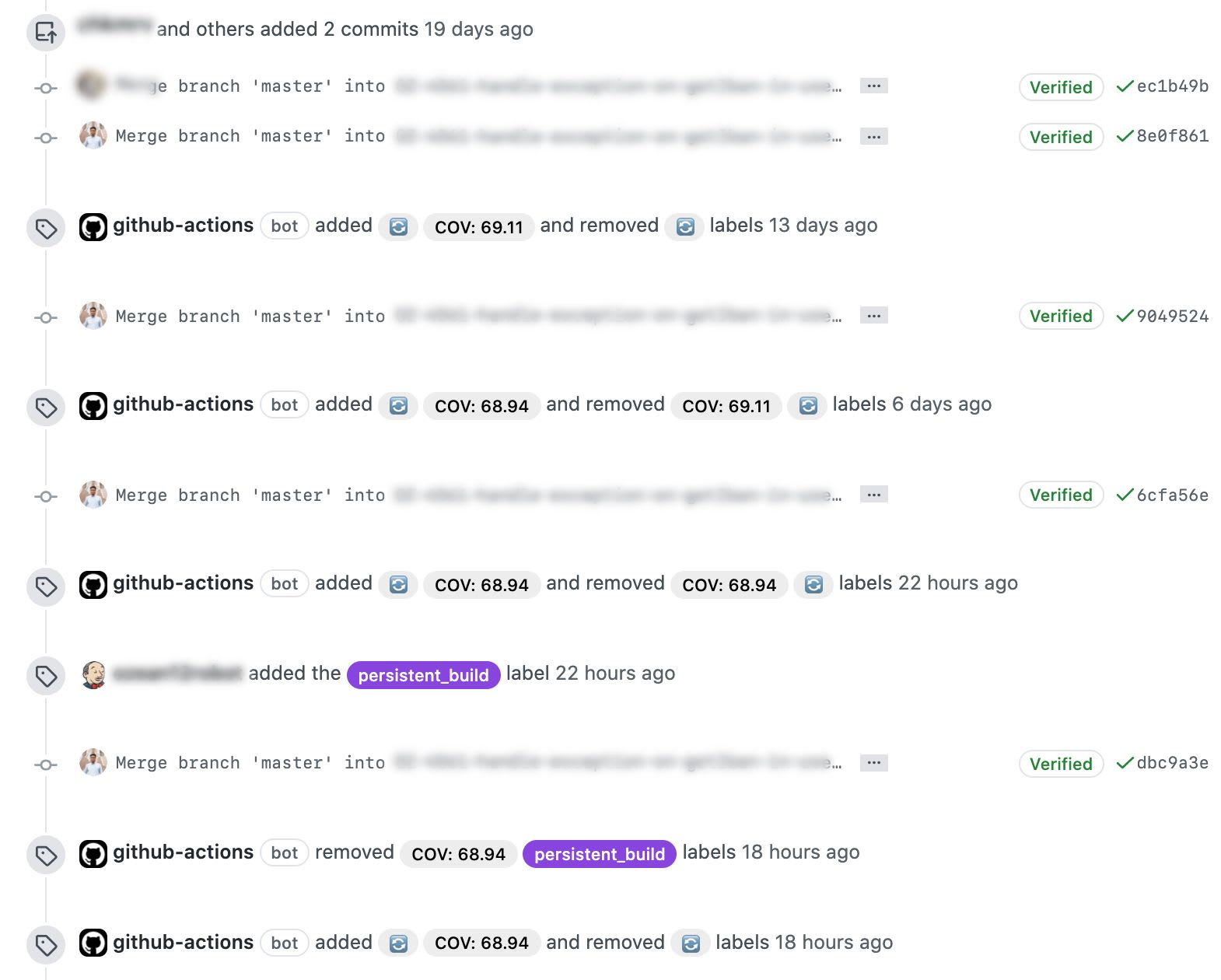Add Test Coverage Label with Github Actions
A good Testing setup will help you release with confidence & sleep with peace. Here's How to Add Test Coverage Label with GitHub Actions

A good Testing setup will help you release with confidence and sleep with peace.
The Testing setup starts with Unit Testing. It increases to the Integration testing, End-to-End testing etc.
How much of code you have tested is measured with Test Coverage.
Knowing Test Coverage while writing the code is easy to know. There is no long waiting time.
Though how would the people review any Code Change will know about the coverage?
In this post, we are going to take a look at a simple GitHub action to test coverage labels to the Pull Requests (PR)
This will help in determining the following:
- General idea of how big the change or PR is
- If the change is big
diffcount, proportionate increase or decrease in Coverage
First, let me share the Action YAML file with you to enable the Coverage Labels
name: test-coverage
on: pull_request
jobs:
install-and-test:
runs-on: ubuntu-latest
strategy:
fail-fast: true
matrix:
node-version: [10]
steps:
- name: Add Running Label
# https://github.com/actions/github-script#apply-a-label-to-an-issue
uses: actions/github-script@v2
with:
github-token: ${{secrets.GITHUB_TOKEN}}
script: |
github.issues.setLabels({
issue_number: context.issue.number,
owner: context.repo.owner,
repo: context.repo.repo,
labels: [':arrows_counterclockwise:']
})
- uses: actions/checkout@v2
- name: Use Node.js ${{ matrix.node-version }}
uses: actions/setup-node@v1
with:
node-version: ${{ matrix.node-version }}
# https://github.com/actions/cache/blob/main/examples.md#node---yarn
- name: Get yarn cache directory path
id: yarn-cache-dir-path
run: echo "::set-output name=dir::$(yarn cache dir)"
- uses: actions/cache@v2
id: yarn-cache # use this to check for `cache-hit` (`steps.yarn-cache.outputs.cache-hit != 'true'`)
with:
path: ${{ steps.yarn-cache-dir-path.outputs.dir }}
key: ${{ runner.os }}-yarn-${{ hashFiles('**/yarn.lock') }}
restore-keys: |
${{ runner.os }}-yarn-
- name: Install Yarn and Project Dependencies
run: |
npm i -g yarn
yarn install
- name: Test and Generate Coverage
run: yarn run test:coverage
- name: Print the Total Coverage
id: coverage-percent
shell: bash
run: |
value=`sed -n 47p coverage/lcov-report/index.html | awk -F '>' '{print $2}' | awk -F '%' '{print $1}'`
echo "::set-output name=coverage::$value"
echo $value
# https://github.com/actions/github-script#apply-a-label-to-an-issue
- name: Add Coverage Label
uses: actions/github-script@v2
with:
github-token: ${{secrets.GITHUB_TOKEN}}
script: |
github.issues.setLabels({
issue_number: context.issue.number,
owner: context.repo.owner,
repo: context.repo.repo,
labels: ['COV: ${{steps.coverage-percent.outputs.coverage}}']
})
Steps Done above are:
- Adds the ? label indicating that the Checks are running (/optional/)
- Uses
actions/checkout@v2git capabilities in Actions - Uses
actions/setup-node@v1and sets up the node - Sets up Cache for Yarn, installs Yarn and dependencies of the project
- Runs
yarn run test:coveragefor Test coverage generation - Uses
sedandawkto extract coverage % from coverage report HTML - Sets the coverage % as the output to use in other steps
- Removes the ? and adds the label
COV: XX.XXto the PR
Sed Command used to extract line from file
sed -n 47p coverage/lcov-report/index.html
Here 47 is the line number where total coverage per cent resides
AWK command used to clean up the HTML
awk -F '>' '{print $2}' | awk -F '%' '{print $1}'
Here, we break the string down with character > & print the 2nd piece.
The printed value becomes the input for the next awk command with pipe |.
We break the input by character % and print the 1st piece.
Benefits
- Labels are much accessible than comments
- You can see the coverage immediately without needing to open the PR
- If tests fail, the ? label will stay there. You can see that something went wrong (with the tests, sometimes with other steps)
Drawbacks
- If you are pushing to your repo and there is an active PR, it will clutter the PR page a lot
- If you have other Labels that you are relying on, this Action will remove them in the last step

Assumptions
- The above action YAML is for JavaScript projects
- Yarn is used as the package manager, you can find all and replace
yarnwithnpmand remove the yarn cache steps - The test coverage report is in the HTML file generated by
jest - The line number and markup around total coverage %. For other types of test reports, you need to find the position of coverage & adjust the
sedandawkcommands
Updates:
➡️ 19.09.2020
Coverage labels change only on Coverage Change
Only parts that have been changed in above scripts are
- Remove the running label addition and removal steps
- Update script to calculate and analyze the Coverage and Check if need to be added, updated or removed
script: |
let newLabel = 'COV: ${{steps.coverage-percent.outputs.coverage}}'
const labels = await github.issues.listLabelsOnIssue({
issue_number: context.issue.number,
owner: context.repo.owner,
repo: context.repo.repo
})
console.log(labels.data)
let covLabel = null
labels.data.forEach(label => {
if (label.name.match(/COV:/)) {
covLabel = label
}
})
if (covLabel && covLabel.name === newLabel) {
covLabel = null
}
covLabel && github.issues.removeLabel({
issue_number: context.issue.number,
owner: context.repo.owner,
repo: context.repo.repo,
name: covLabel.name,
})
newLabel && github.issues.addLabels({
issue_number: context.issue.number,
owner: context.repo.owner,
repo: context.repo.repo,
labels: [newLabel]
})With above pieces in the YAML script, the complete Github Action will look like:
name: test-coverage
on: pull_request
jobs:
install-and-test:
runs-on: ubuntu-latest
steps:
- uses: actions/checkout@v2
- name: Use Node.js 10
uses: actions/setup-node@v1
with:
node-version: 10
# https://github.com/actions/cache/blob/main/examples.md#node---yarn
- name: Get yarn cache directory path
id: yarn-cache-dir-path
run: echo "::set-output name=dir::$(yarn cache dir)"
- uses: actions/cache@v2
id: yarn-cache # use this to check for `cache-hit` (`steps.yarn-cache.outputs.cache-hit != 'true'`)
with:
path: ${{ steps.yarn-cache-dir-path.outputs.dir }}
key: ${{ runner.os }}-yarn-${{ hashFiles('**/yarn.lock') }}
restore-keys: |
${{ runner.os }}-yarn-
- name: Install Yarn and Project Dependencies
run: |
npm i -g yarn
yarn install
- name: Load Translations
run: yarn run load-resources
- name: Test and Generate Coverage
run: yarn run test:coverage
- name: Print the Total Coverage
id: coverage-percent
shell: bash
run: |
value=`sed -n 47p coverage/lcov-report/index.html | awk -F '>' '{print $2}' | awk -F '%' '{print $1}'`
echo "::set-output name=coverage::$value"
echo $value
# https://github.com/actions/github-script#apply-a-label-to-an-issue
- name: Add Coverage Label
uses: actions/github-script@v2
with:
github-token: ${{secrets.GITHUB_TOKEN}}
script: |
let newLabel = 'COV: ${{steps.coverage-percent.outputs.coverage}}'
const labels = await github.issues.listLabelsOnIssue({
issue_number: context.issue.number,
owner: context.repo.owner,
repo: context.repo.repo
})
console.log(labels.data)
let covLabel = null
labels.data.forEach(label => {
if (label.name.match(/COV:/)) {
covLabel = label
}
})
if (covLabel && covLabel.name === newLabel) {
covLabel = null
}
covLabel && github.issues.removeLabel({
issue_number: context.issue.number,
owner: context.repo.owner,
repo: context.repo.repo,
name: covLabel.name,
})
newLabel && github.issues.addLabels({
issue_number: context.issue.number,
owner: context.repo.owner,
repo: context.repo.repo,
labels: [newLabel]
})
- name: Archive code coverage results
uses: actions/upload-artifact@v1
with:
name: code-coverage-report
path: coverageConclusion
Testing is good when maintained. Coverage is a good indicator of how the codebase is sane.
The goal is not to go crazy make it reach 100% but to stay informed about changes coverage.
How is Test Coverage helping you in your Development workflow?
Let me know through comments ? or on Twitter at @heypankaj_ and/or @time2hack
If you find this article helpful, please share it with others ?
Subscribe to the blog to receive new posts right to your inbox.
Credits
- Photo by Isaac Smith on Unsplash
- Icon from IconFinder

